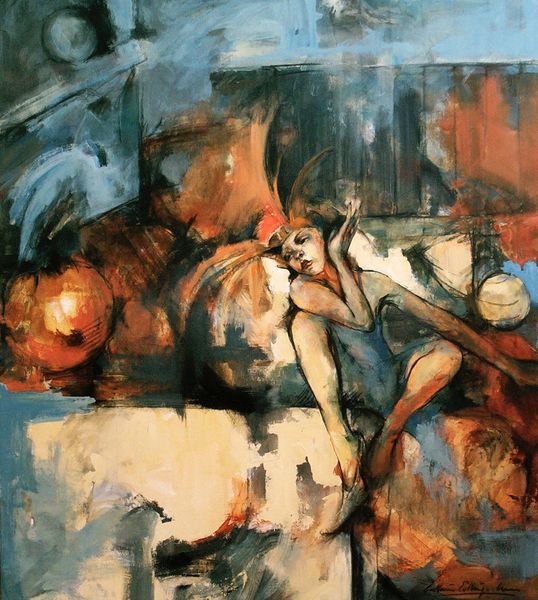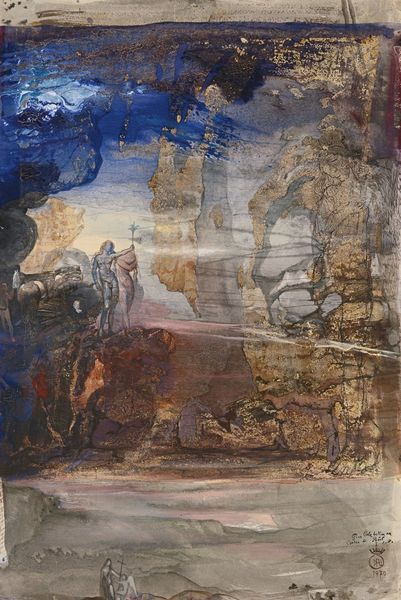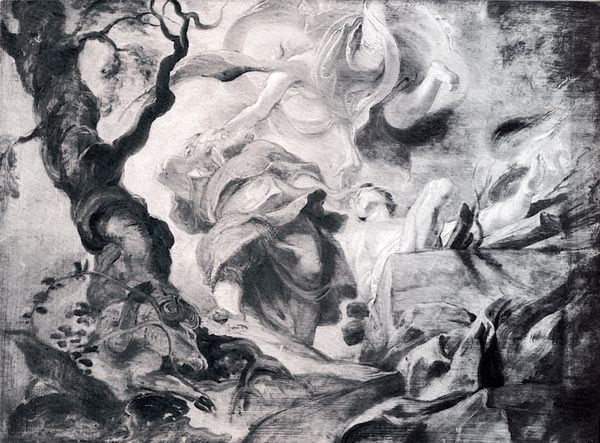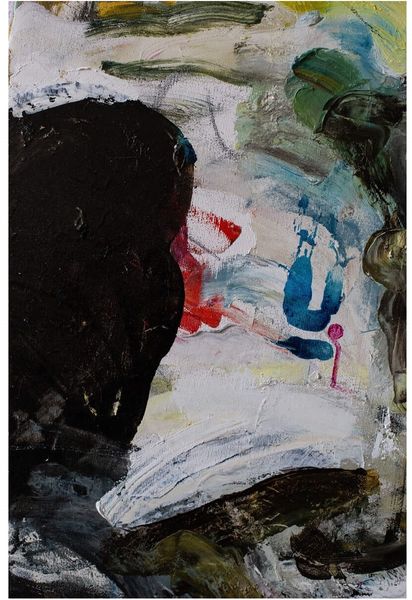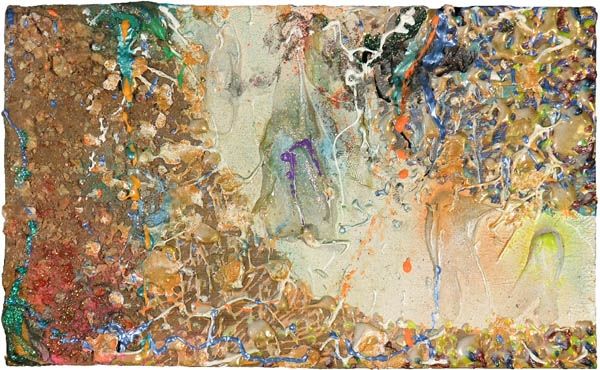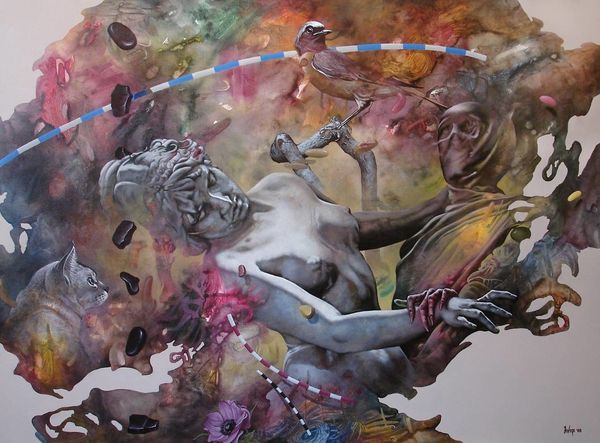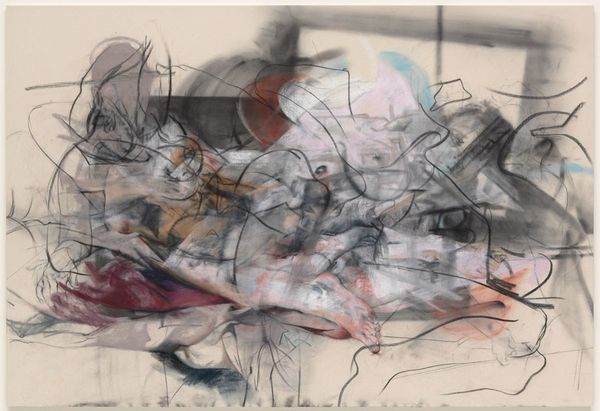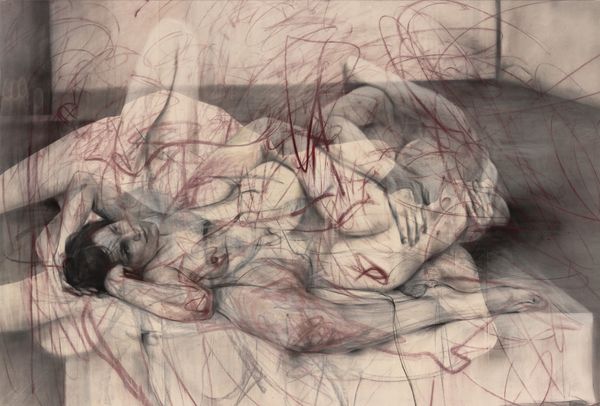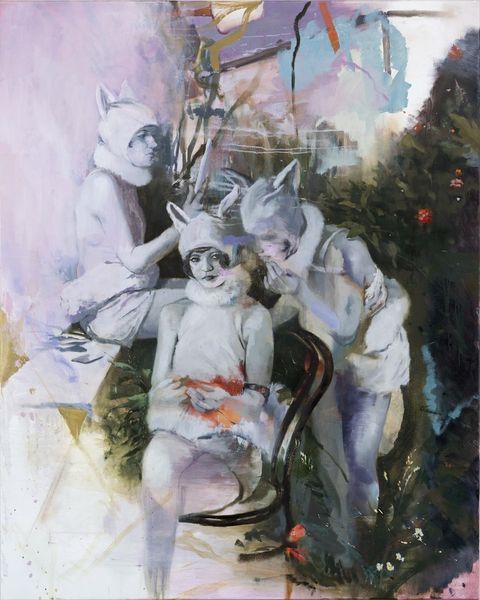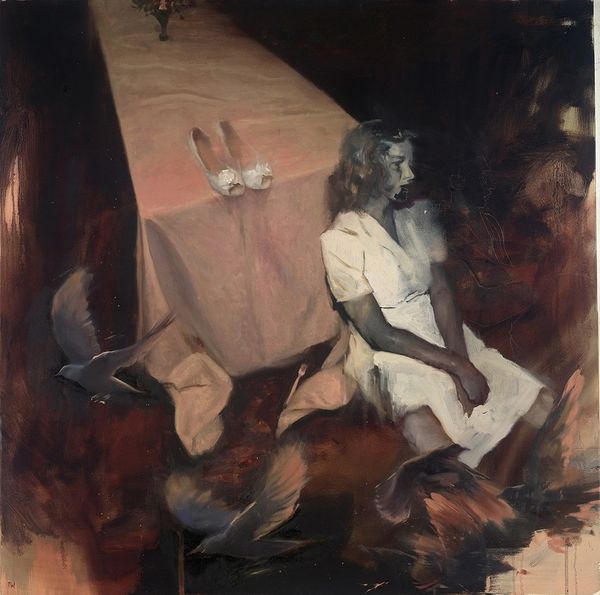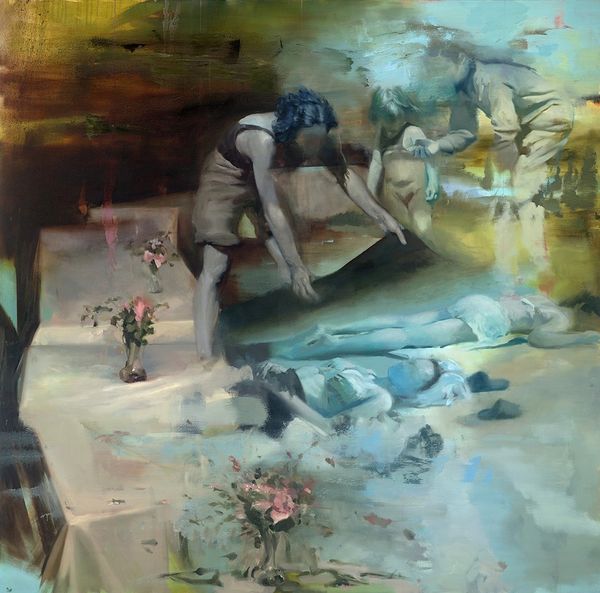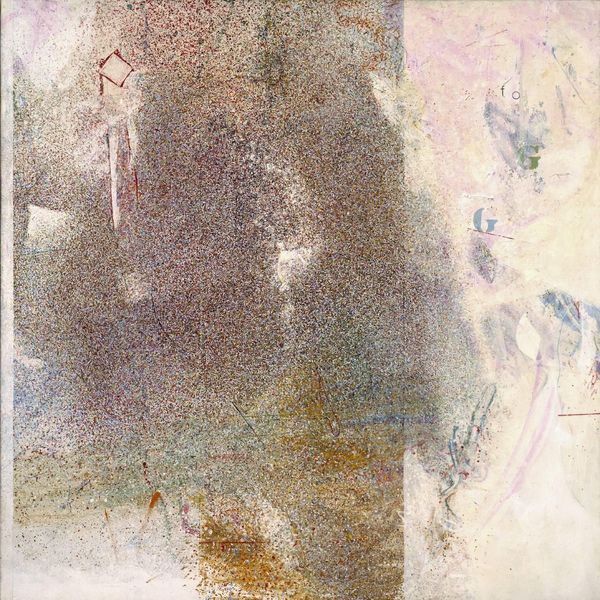
Dimensions: support: 506 x 608 mm
Copyright: © The estate of Keith Arnatt | CC-BY-NC-ND 4.0 DEED, Photo: Tate
Editor: So, here we have "Pictures from a Rubbish Tip" by Keith Arnatt. It's a color photograph, quite visceral. What strikes you most about its composition? Curator: The stark juxtaposition of textures and forms is indeed compelling. Consider the interplay between the rigid geometry of the plastic container and the organic, almost skeletal quality of the chicken bones. Note also the translucent shroud of plastic film, which acts as a scrim, both revealing and concealing. Editor: It's like a still life, but so...unsettling. Curator: Precisely. Arnatt is playing with the formal conventions of still life, subverting our expectations. The high-key lighting renders the abject beautiful, forcing us to confront the materiality of waste. Are we complicit in this scene? Editor: That's a lot to think about. I'm not sure I'll look at trash the same way again. Curator: Good. Art should challenge, not merely decorate.
Comments
tate 6 months ago
⋮
http://www.tate.org.uk/art/artworks/arnatt-pictures-from-a-rubbish-tip-t13170
Join the conversation
Join millions of artists and users on Artera today and experience the ultimate creative platform.
tate 6 months ago
⋮
Pictures from a Rubbish Tip 1988–9 is a series of five large colour photographs by the British artist Keith Arnatt featuring close-up shots of rubbish that has been dumped at a local tip. In each photograph, the lens focuses upon select pieces of discarded food – such as bread, chicken bones and vegetables – that lie on clear and pale-coloured plastic bags. These bags both reflect and diffuse the surrounding daylight, highlighting the varying hues of the rubbish so that the scenes appear brightly coloured and partly abstract. Although the types of rubbish shown and their exact position within the compositions varies slightly, each is presented at an apparently fixed distance from the camera and this, as well as the similar lighting effects used across the five works, creates a sense of cohesion in the series.
